
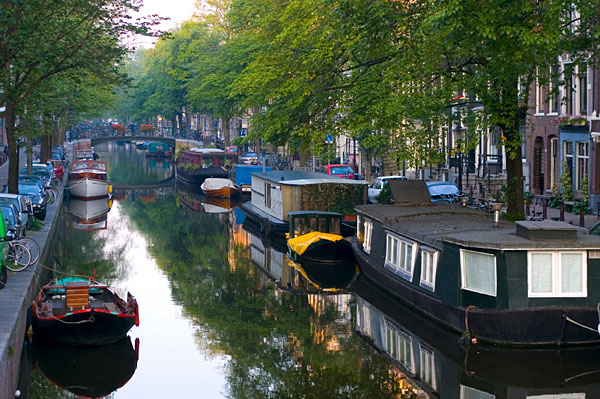
Overview
Kingdom of the Netherlands (Holland) - a constitutional monarchy headed
by King (Queen). Population - Dutch.
Geographical location, nature
The country is located in north-western Europe, bordered by Belgium and
Germany. Together with Belgium and Luxembourg is a community of Benelux.
In the north and west by the North morem.Ploschad country - 41.5
thousand square meters. km. The possessions of the Netherlands also
includes Dutch Antilles and Aruba in the Caribbean. In the center of the
country is the river Rhine.
Capital, the largest city
Amsterdam (Amsterdam, originally Amstelredam - the dam on the river.
Amstel), capital of the Netherlands, an important economic center, the
most populous city in the country and a major seaport. 866.4 thousand
people (1967), with the suburbs of over 1 million inhabitants (in the
early 18th century. - 100 thousand inhabitants, in 1920 - 642 thousand
inhabitants, in 1946 - 769 thousand inhabitants, in 1958 - 872 thousand
. inhabitants).
Amsterdam has an advantageous transport and geographical location in the delta. Amstel, the Bay Eyselmer 2 channels connected to the North Sea. Due to the channel takes Nordsee ocean liners. Cargo turnover (17.9 million tons in 1968) took 2nd place in the country after Rotterdam. Amsterdam is connected channels, w. on the highway and with The Hague, Rotterdam and other cities in the Netherlands and across the Rhine - with Germany. In Amsterdam Schiphol International Airport (serves up to 8 million passengers per year).
Amsterdam share in the national income of the country is 1/10 part. Amsterdam is one of the world's financial and trade centers (there are up to 39% of the bank and zhirooperatsy country to Amsterdam up to 15% of retail and wholesale trade). In Amsterdam, there are Dutch bank, stock exchange, the board of the largest commercial banks' Algemene Bank Nederland "," Amsterdam - Rotterdam Bank "and others, the board of many industrial and shipping companies, trading exchange.
In Amsterdam and suburbs located enterprise engineering and electrical industry (1/3 of employees in industry), especially developed aircraft, production calculator, engineering (including shipbuilding) are chemical (acids, fertilizers, paints and varnishes), woodworking ( significant lumbering) Industry Refining (plant capacity of 4 million tons per year). In Amsterdam, widely available clothing (from 1968 has one of the largest centers in the world - House of clothing that focus about 1/2 turn of the industry in the country), food, traditionally associated with the use of imported raw materials and semi-finished products (cocoa, coffee, tobacco, coconut oils as well as local and imported sugar beets, potatoes, corn), and industry. Amsterdam has long been known as a major center for diamond cutting and trading.
In the postwar period in Amsterdam an increasing number of people employed in the service sector (60% in 1968) and a reduction in the number of employees in the industry (for 1960-68 by 15%).
The old core of Amsterdam - the area of the dam on the river. Amstel, now Dam Square with the Royal Palace in the style of Dutch classicism (the former Town Hall, 1648-55, architect J. van Kampen). In 1610-62 dug semiring and radial channels (all in Amsterdam about 50 channels, 500 bridges). In the old town along the green embankments - houses and warehouses with narrow facades, patrician houses, hospitals, orphanages, building guilds and companies of 16-18 centuries. City gates and towers of 15-17 centuries. Church - Gothic (Oude Kerk and Nieuwe Kirk, 15-16 cc.) and with features of classicism (Zeyderkerk, Westerkerk and Norderkerk, 1st third of the 17th century. architect X. de Keyser). In the 19. P. X. Kuipers built in the spirit of the Dutch gothic State Museum (1877-85) and the Central Railway Station (1881-89). Exchange Building (1897-1903, architect X. P. Berlage) marked the beginning of a new building in Amsterdam, the developing to the south (plan 1902-17, the architect Berlage, buildings in the National Romantic spirit, architect M. de Klerk, etc.) Z., S., northeast and southeast (Plan 1935, architect C. van Esther, planning and development in the spirit of functionalism). Many large buildings 20. (Architects J. M. van der Mey, KP C. de Bazel, I. Stahl, W. M. Dyudok etc.). In Amsterdam - National Museum (see the Rijksmuseum), City Museum (art 19-20 cc.), Rembrandt House and other museums.
Amsterdam, the original fishing village, first mentioned in 1275. In 1300 (or 1301) received the city rights. By the time the Dutch bourgeois revolution of the 16th century. occupied a leading place among the commercial cities of the Northern Provinces. After joining the revolution only in 1578, Amsterdam, however, are more likely to benefit from it. In the 17th c., The economic recovery in the Netherlands, has become the center of world trade and credit value (this contributed to the decline of the main trade rival Amsterdam - Antwerp). Following the creation of Amsterdam in the 16th century. Exchange was founded in 1609 small coin bank. In 1795-1806 Amsterdam - capital Batavian Republic, the Kingdom of the Netherlands then. New economic growth (after a temporary decline in the 18th - early 19th c.), Which began with the 2nd half of the 19th century., Was associated with the development of capitalist industry, banking, the colonial trade. Amsterdam - the largest center of the labor movement in the country. Played a leading role in the general strike in 1903, in the February 1941 strike against the Nazi occupation (it was occupied by Nazi troops in May 1940 and May 1945).
Climate in Netherlands
Location Holland in
temperate latitudes in The Atlantic lowlands of Europe defines climatic
conditions of the country. Because of its small size and lack of
significant elevation climatic differences are mild. All year round, but
especially in the winter cyclones sweep over the country on the Atlantic
side. The sky is often overcast, typical overcast, the rapidly changing
weather with dense fog. On average for the year is only 35 clear days.
Due to the predominance of westerly winds that blow from the North Sea,
in winter in the Netherlands is usually installed mild weather, and
summer - cool. The average January temperature is 2 � C. In winter,
there are short periods with negative temperatures, alternating with
thaws. Snowfalls are very rare, and even in winter precipitation falls
as rain. Severe frosts are in exceptional cases, and only in the
invasion of cold air from the east the ice forms on the lake. IJsselmeer
and the lower Rhine. But if you still safe ice cover is formed, the
Dutch gladly go skating on the canals. The average July temperature is
+16-17 C. The summer periods of cool weather alternated with hot days.
The average annual rainfall of 650-750 mm, the maximum number is in
August-October.
Climatic conditions favor the growth of Holland forage grasses and
cereals and fruit crops that give high yields. Due to frost-free period
vegetables can be grown in the open ground from early spring to late
fall.
Traditions of Netherlands
Very often in the streets
of Amsterdam can see the following picture: the mistress of the powder
washes the sidewalk in front of his house. This tradition goes back to
the purity of ancient times. In those days, greasy pavement is
considered a serious offense, which spoke about the lack of patriotism.
Residents of the Netherlands is very punctual, so it is recommended to
comply with exceptional accuracy over time at each meeting. Do not
forget the restraint Dutch are not welcome handshakes and compliments.
Wealthy and affluent residents of Holland not to expose their financial
situation here is not accepted. A Dutch national traits are prudence,
moderation and civility.
Netherlands - the only country in the world where you are allowed the
use of marijuana and hashish. These drugs are sold to all adults in the
coffeeshops. Opium, cocaine, crack and other hard drugs are prosecuted
in the same way as in other countries.
As for the costumes, they stopped wearing long ago - in the early 20th
century, the national costume could be seen in rural areas. Currently,
traditional costumes are islanders Marken, and several fishing villages,
but it is done in the first place for the tourists, who are popular are
"ethnographic reserves.
It happens that in the rural areas can meet the national footwear, which
is a wooden shoes - Klomp. In cities across even workshops where they
are made. Wooden shoes are one of the most popular gifts in Holland.
The country has a very interesting tradition, so-called, the hunt for
old things. Once a month, organized removal of large old things. In the
evening, local residents are beginning to bear and keep the streets
cabinets, upholstered furniture, tables, chairs, refrigerators, mirrors,
vacuum cleaners, waste building materials, garden tools, old lamps,
floor lamps and more. All of these things are in pretty good condition.
Visit these "dump" is not seen as something shameful. Many Dutch sent
here by bicycle in search of the necessary things that the store would
have cost several hundred euros.
But if this tradition is rather useful, another local custom seems at
least strange - the throwing of fresh food in the trash. In the
Netherlands, the remains of any food after eating discarded, and do not
add up in the fridge, as the country is not welcome eating so-called
"yesterday's meal."
Quite an interesting tradition in the Netherlands related to childbirth.
As soon as an event occurs, happy father in the garden before the house
sets a stork with a baby, which is made of all available materials.
Attractions in Netherlands
Hague
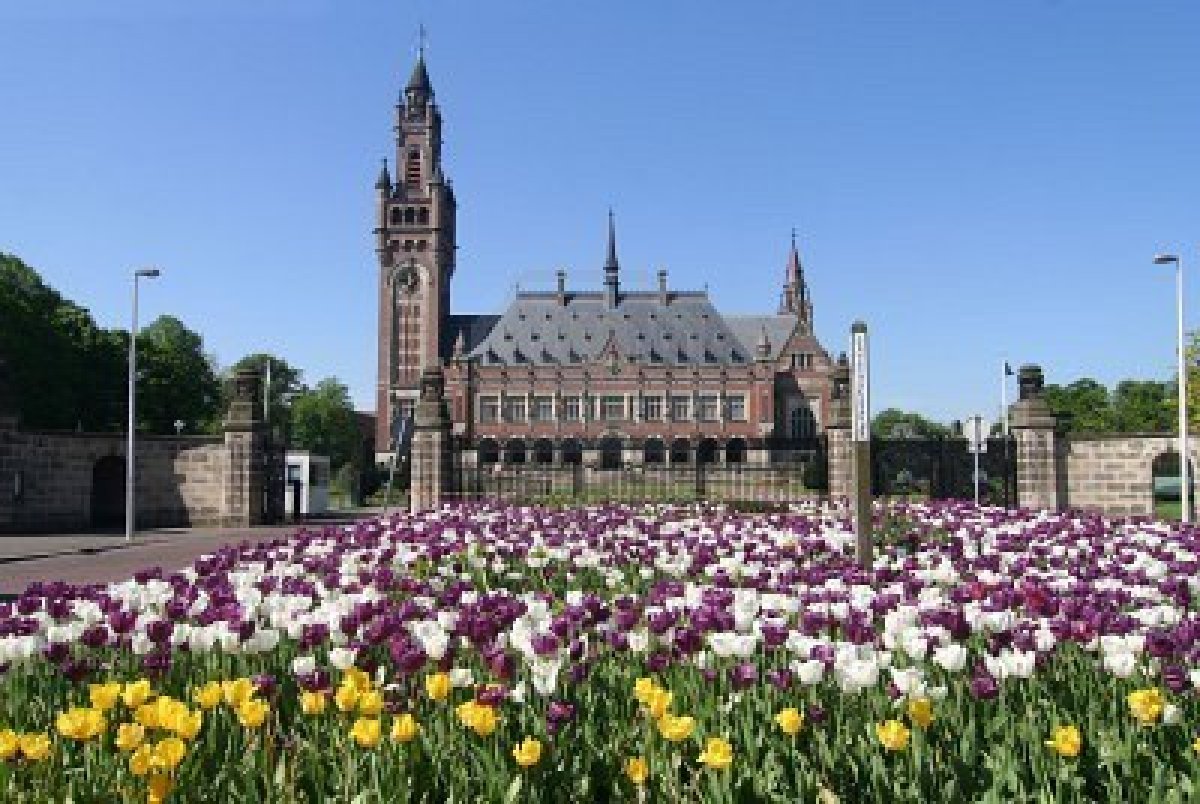
Hague was founded in 1230
when Count Floris IV of Holland built a small castle on the spot where
now is the city. Now, the castle is a palace complex Binnenhof. In 1248,
Count William II of Holland, who became the King of Rome, began to build
a new, more suitable lock on the shore dune lake, this "palace pond" (niderl.
Hofvijver). After the death of William, his son Floris V finished the
construction of the castle, the so-called Knights' Hall (niderl.
Ridderzaal), who was dressed up with gilded roof and two towers.
Knight's Hall has been strengthened, but the surrounding
countryside has not received city rights, despite the fact that The
Hague was the seat of the Dutch graphs. The great cities of Holland
prevented Hague became a fortress city and therefore during the Eighty
Years' War, the town was almost completely depopulated. Hague served as
the headquarters of the Spanish during the siege of Leiden.
In 1400 The Hague had a few thousand people and more like a town
than a village. In these times, however, the city was largely
self-government, and the Count of Holland and posledniki prefer to keep
their residence. Since 1581, The Hague was the supreme body of
government of the seven United Provinces, the States-General (niderl.
Staten-Generaal).
In the XVII century the population of The Hague increased to 16
000. In the same century, Prince Maurits built a bypass around the city,
as the beginning of a real fortress, but these fortresses were never
built. At the end of XVIII veka population had grown to 40,000
residents, resulting in "the village" has become the third largest
settlement in the Netherlands (after Amsterdam and Rotterdam).
Because there is a palace in The Hague stathaudera, the
States-General, the residence of foreign ambassadors and nobles, the
city was much more "aristocratic" other Dutch cities. There was a huge
contrast between the elegant area around the Knights' Hall and the
working area of The Hague.
Only in 1806, under French rule, Hague finally got city rights.
In this century, however, the city walls were considered more
oppression, rather than profits, and strength, and then be constructed.
The city could expand considerably.
After 1850, when the Hague lived for more than 70,000 people,
the city began to expand beyond the bypass channel XVII century. About
1870 people took over 100,000 at the beginning of XX century is 200 000.
To the south of the historic center of densely developed areas of work,
however, as a "dune" side of town, north of the center, built new areas
for more affluent citizens. The difference between those who live in the
"sand" and the people who live on the "turf" exists, though to a lesser
degree, and up to today.
In 1899 he held the Hague Peace Conference, which leads to the
establishment of the court of arbitration is internationalized, based in
The Hague. American tycoon Andrew Carnegie gave $ 1.5 million to
construct a "Peace Palace", the seat of the court.
At the end of World War II, March 3, 1945, there was a huge
disaster. The pilots mistakenly bombed area Bezeydenhaut (niderl.
Bezuidenhout), killing about 500 people.
In the XX century the Hague still expanded, annexing surrounding
areas. The first victim was a village Loosdeynen (niderl. Loosduinen),
in 1923. In 2002, large parts of the municipalities of Leidschendam (niderl.
Leidschendam), Forburga (niderl. Voorburg) and Rijswijk (niderl.
Rijswijk) were added to the Hague area.
Keukenhof - park tulips
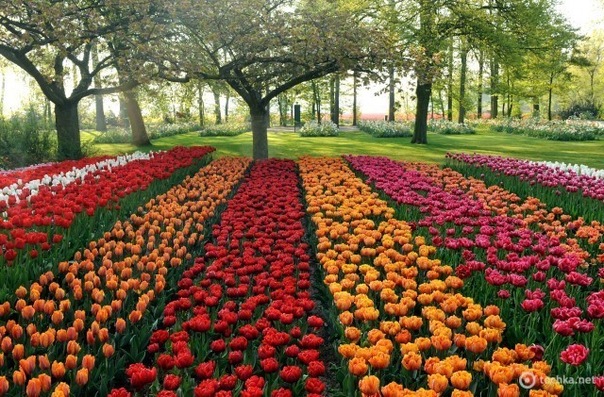
One of the most visited attractions in the country is the Keukenhof Tulip Park. This action is possible, both independently and in a tour bus, but it is imperative to get. See and feel the aroma of several millions (no exaggeration!) Tulips, hyacinths, daffodils, carnations - it can not be described in any words. Endless multicolored stripes-beds of various colors, intricate flower beds - most importantly, do not forget to bring your camera to capture this incredible beauty. Many varieties of tulips bring considerable revenue to the treasury of the country, while this flower is a symbol of the Netherlands.
Utrecht
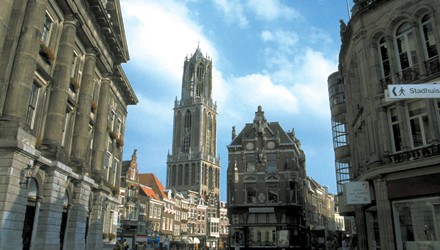
Hallmark of the city is the Kirk House - the oldest cathedral in the Netherlands with the highest spire in the country. The city itself has existed since '47 BC. e. His name is cozy streets to walk, canals and bridges, traditional Dutch cities, evoke a romantic mood, but the street names are puzzling. The fact that their names were long streets, the names of the markets that were placed on them. Here and there are still streets Goose Market, Fish Market, pork market ... houses of the rich merchants built such a way that their basements free approach for unloading goods barges, floating on the canals. Now this is not necessary, and in the former cellars are equipped with numerous restaurants and cafes, it is not cheap, by the way. Utrecht - a university town, which he is very proud. University here has existed since the 17th century.
Cities in Netherlands
Alkmaar
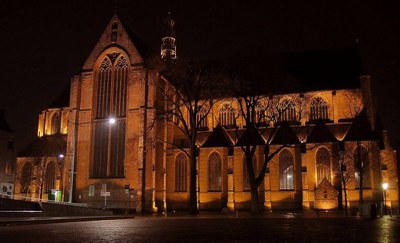 To
say that the Alkmaar cheese factory, will be wrong. It's just a cheesy
city. Syroprodazhny or, even more accurately. Because his cheese here
though and do not it creates the weather on Friday Kaasmarkt (Kaasmarkt),
which take place in Alkmaar from April to October. Cheeses are brought
here for sale in other cities, where the emphasis is not on the
industry, and on farm cheeses. City Center - Weight Area (Waag-plein).
Next it basically a tourist can not go anywhere. It is smartly-Painted
Building Weigh House (Waag, 1390). In fact, at first it was a chapel,
but in 1582 the Protestants found the building more pragmatic
application.
To
say that the Alkmaar cheese factory, will be wrong. It's just a cheesy
city. Syroprodazhny or, even more accurately. Because his cheese here
though and do not it creates the weather on Friday Kaasmarkt (Kaasmarkt),
which take place in Alkmaar from April to October. Cheeses are brought
here for sale in other cities, where the emphasis is not on the
industry, and on farm cheeses. City Center - Weight Area (Waag-plein).
Next it basically a tourist can not go anywhere. It is smartly-Painted
Building Weigh House (Waag, 1390). In fact, at first it was a chapel,
but in 1582 the Protestants found the building more pragmatic
application.
Delft
Rotterdam
 Rotterdam is
a sharp contrast to Amsterdam almost all directions. Are the Netherlands
and tall and forth. And not only architectural straight lines and
skyscrapers, and economic activity. This is not a rave, ferial, everyday
city. Rotterdam deserves more trips a day to see how far stepped Dutch
architectural thought.
Rotterdam is
a sharp contrast to Amsterdam almost all directions. Are the Netherlands
and tall and forth. And not only architectural straight lines and
skyscrapers, and economic activity. This is not a rave, ferial, everyday
city. Rotterdam deserves more trips a day to see how far stepped Dutch
architectural thought.
Back in Rotterdam has several attractions of the museum character, but
prominent among them, perhaps, there is not one. Excursion to the port
(second in the world in freight turnover), really powerfully impressive,
but again - not for everybody. And to get here from Amsterdam elementary
- 40 minutes by train. From The Hague in 2006, all can be reached by
light rail. You can come by train to and from Schiphol Airport (half an
hour). As in the capital, in Rotterdam there is a problem with parking
in the center. The only thing that compensates for its neuyut Rotterdam,
it's an abundance of parks. Although the Hague them more. But first
things first.